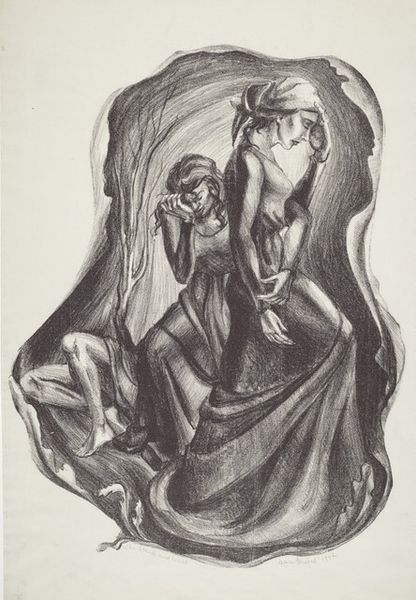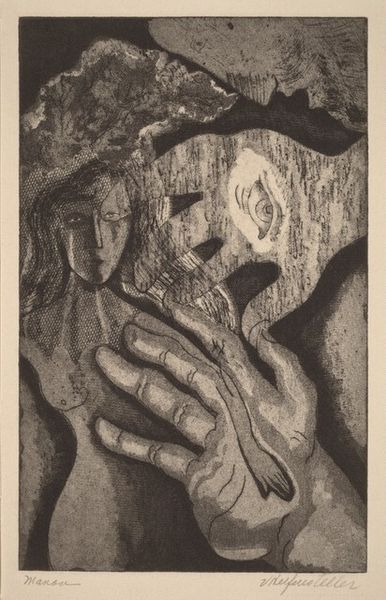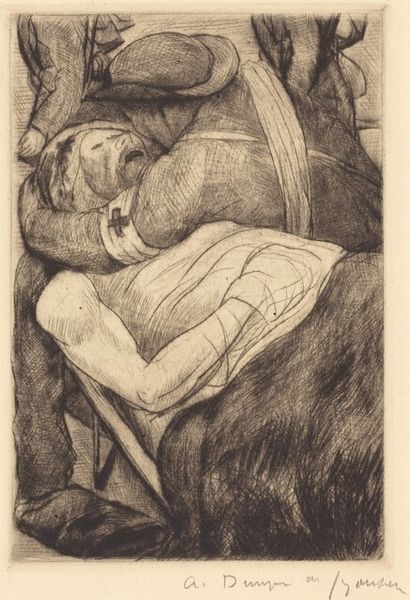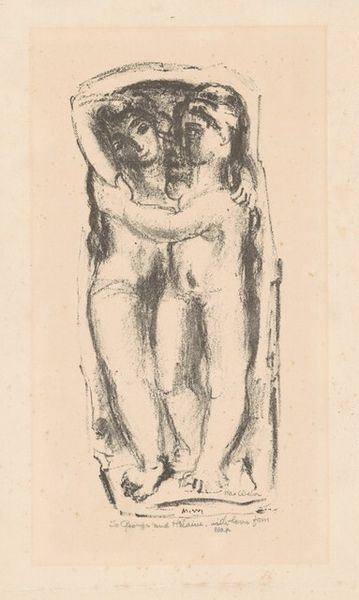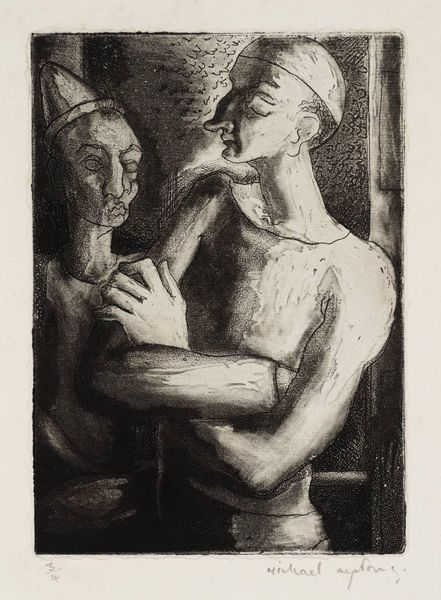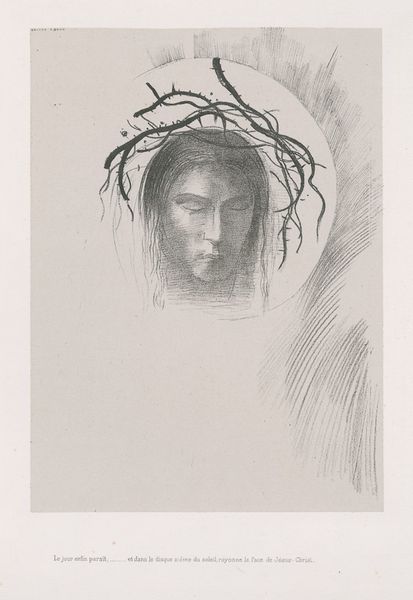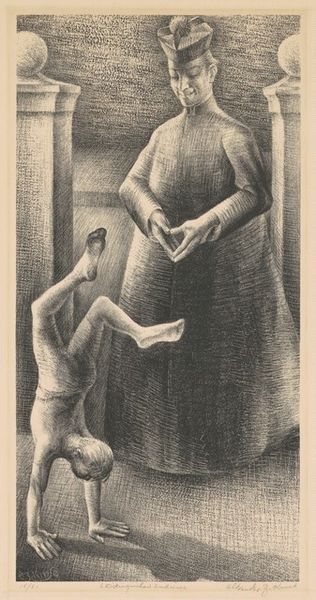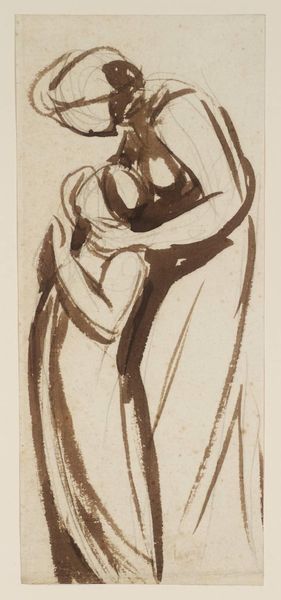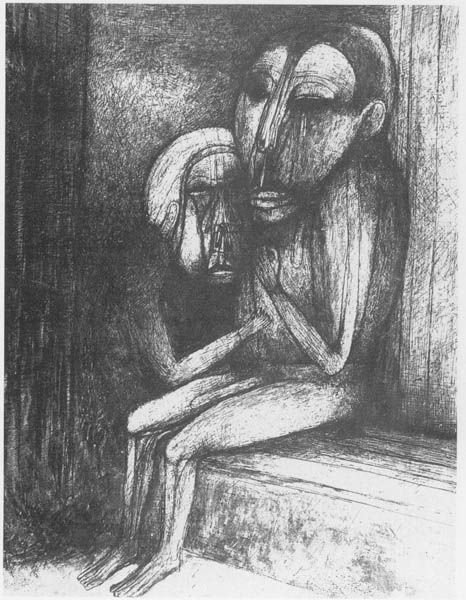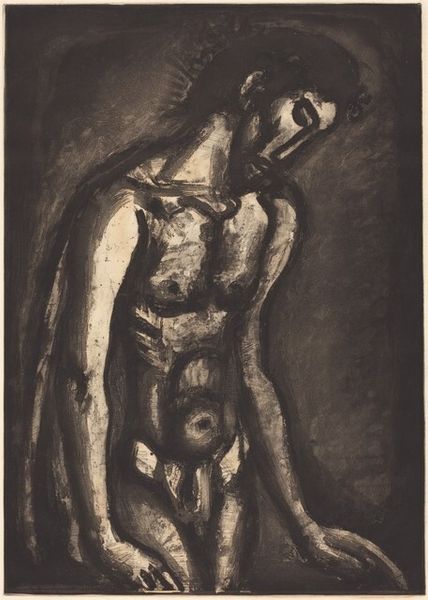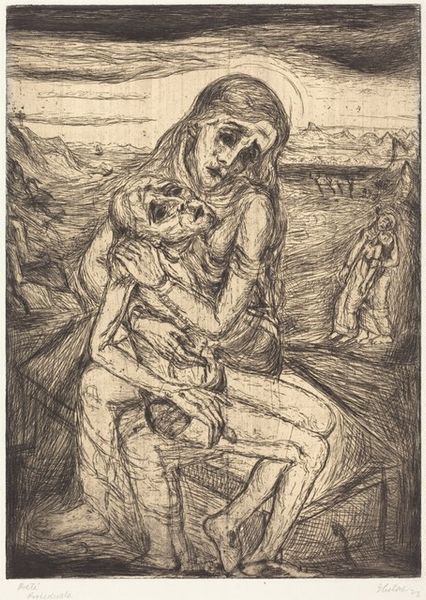
drawing, print, pencil
#
portrait
#
drawing
# print
#
charcoal drawing
#
figuration
#
pencil drawing
#
pencil
#
mexican-muralism
#
portrait drawing
#
realism
Copyright: National Gallery of Art: CC0 1.0
Curator: Before us is Julio Castellanos' print, titled "The Injured Eye." It seems to be a study in charcoal and pencil. The initial impression is overwhelmingly somber, wouldn’t you agree? The greyscale rendering amplifies a sense of sorrow and gravity. Editor: Indeed. The tonal range is narrow, and the dense crosshatching weighs down on the figures, intensifying the drama of their circumstance. Curator: The composition shows two figures enclosed in what appears to be a rudimentary frame. One figure is seated, head tilted back, receiving attention to the eye from a standing figure draped in fabric. Notice how Castellanos contrasts the angularity of the doorway against the softer contours of the bodies, further emphasizing their vulnerability within what should be a safe space. Editor: Right. This enclosure evokes the restrictive roles often imposed on women in particular. The shrouded figure tending to the injured eye speaks to the caretaking labor disproportionately shouldered by women, especially within the context of social and political unrest which was something common during the rise of Mexican Muralism that influenced Castellanos' practice. Curator: Yes, there's definitely an emotional undercurrent linking their bond. Note the formal arrangement—the seated figure's posture, the careful administration occurring with precision. These formal attributes build toward the scene's undeniable gravitas. Editor: This image powerfully illustrates the cyclical nature of suffering and healing, care and dependency. Is the injury literal, or does it represent an affliction brought about by social and political realities? The ambiguity is deeply unsettling. Also, it strikes me that this piece bears a certain visual similarity to religious iconography. The seated figure takes on qualities of the Passion. Curator: That's a compelling point! Perhaps we should also acknowledge that these graphic strategies also speak to similar formal themes taken up within muralism. The sharp contrasts amplify themes of loss and hope. I leave with renewed awe at Castellanos’ profound ability to translate complex ideas of suffering, gender, and history so intimately. Editor: And it reminds us that care, resistance, and vision are intertwined and often demand a collective effort toward liberation. Thank you for that thoughtful deep dive, it gave me a lot to consider about Castellanos’ “The Injured Eye.”
Comments
No comments
Be the first to comment and join the conversation on the ultimate creative platform.
